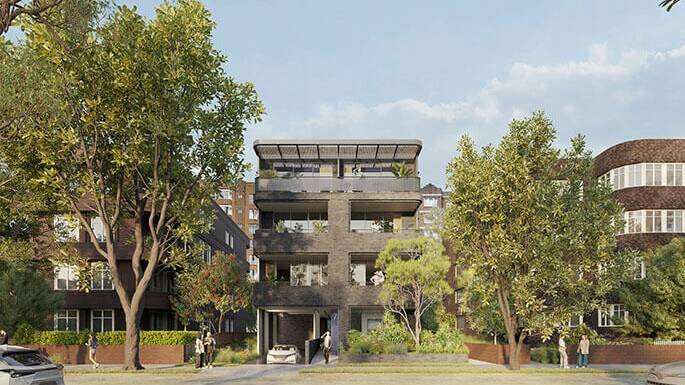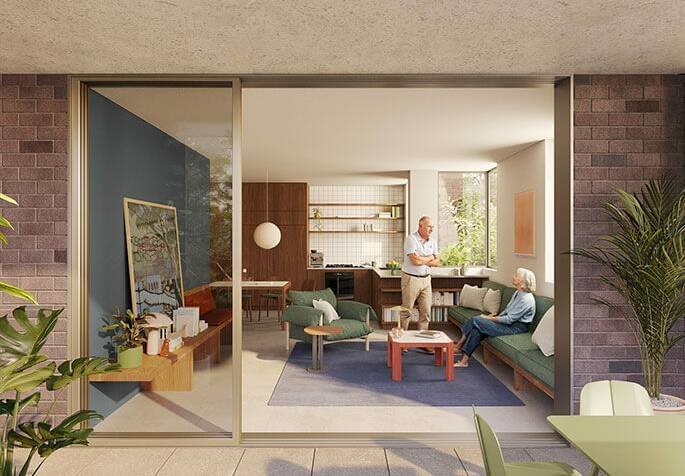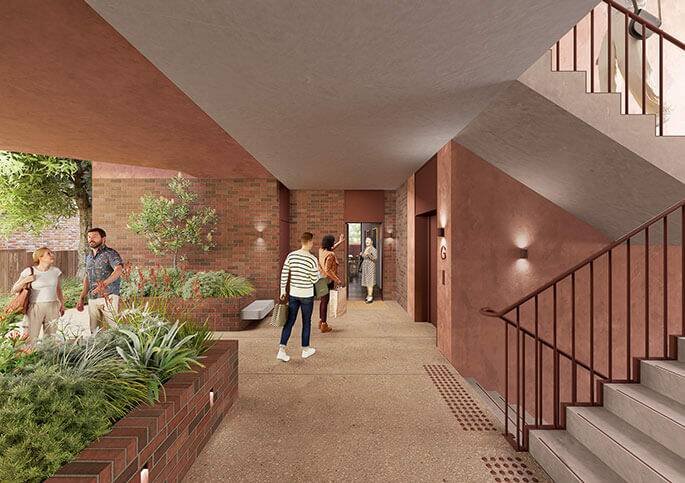Why the answer to our housing crisis has been here all along

When the NSW government announced their latest move to help the housing shortage, it looked pretty familiar to me.
That move was the launch of the NSW Housing Pattern Book Mid-Rise Designs, a total of nine designs for mid-rise apartment blocks that come at a discounted price and are fast-tracked to make their way through the planning process more quickly.
According to NSW Planning Minister Paul Scully the "new patterns will write a new chapter for mid-rise homes in NSW," building on a legacy of "art deco apartments ... [and] red brick walk ups that are a much-loved part of many communities".
Sign up to The Nightly's newsletters.
Get the first look at the digital newspaper, curated daily stories and breaking headlines delivered to your inbox.
By continuing you agree to our Terms and Privacy Policy.An art deco apartment in a mid-rise block of three-storeys and nine apartments is what I live in.
It, along with blonde-brick similar sized blocks is , are housing styles that dominates my coastal suburb in Sydney.

Both of those type of apartments have also long been part of the landscape of large regional cities across Australia and NSW, in particular Newcastle and Wollongong.
The pattern book designs, of three-to-six storey apartment blocks, are proposed for infill sites in Low and Mid Rise Housing and Transport Oriented Development sites in these locations.
They are three cities that are facing increasing pressure to build more housing in established areas, with strong transport links and conveniences such as shopping and hospitals and health care.
But up till now it seems like there has been just two options in housing - either detached house on its own block of land or a towering high-rise that Australians have been reluctant to adopt - either as their own home or as a neighbour.

So the move to something that is tried and tested, and sits more naturally into the scale of our suburbs, such as mid-rise housing seems a better choice.
First choice, not second best
And apartment living is a first choice, not a second best, for a growing number of Australians including myself.
In my building there is a mix of young single flatmates renting, newlyweds who have purchased their first home, families with young kids and empty-nesters.
We don't do without a backyard, there is a communal oasis with a lawn for the kids to play, outdoor dining area and barbecue as well as the equivalent of a shed in the form of common underground storage for bikes.
With only nine apartments in the block, there has never been a double up of people wanting the sole use of the backyard at one time.
However it is a place to meet for families with young children to meet together and share a takeaway pizza from the Italian down the road or barbecue while the children play together.
There is no pool in the backyard, but an ocean pool and sandy beach at the end of the street more than makes up for that.
What we have given up in individual square metres of living space is more than made up by the stunning spots that we live in close proximity to and which we can utilise every day, not just for the occasional outing.
Human scale
One of the best aspects that these human scale mid-level apartments offer is community.

Smaller size blocks become neighbourhoods within themselves. A central stairwell allows for incidental chats and an investment in a common property means people need to work together to enrich all.
There is the community within the apartment block but also very much in the neighbourhood, which has a large number of apartment blocks such as my own.
The local cafe and neighbourhood favourite restaurants, weekly farmers market and streets are all within walking distance. Be it on such walks to or at your destination, faces become familiar and daily convesations occur.
With less space inside, people tend to spend more time outside.
Old and new
Buildings of this era have their attractions, high ceilings and a solid build (our flats are understood to have been here since the 1930s but no one is really sure).
Importantly their scale fits into streets that have both apartments and houses, something that some of the pattern book houses, designed for smaller blocks also do.
The advantage of these new designs in the just-released pattern book is that they have taken the best from the past, in scale, and added modern design principles and amenity to make them comfortable for today's living.
As Australians come to terms with embracing apartment living in the future, borrowing from the successes of the past in this arena could be the biggest step forward.
Originally published as Why the answer to our housing crisis has been here all along
